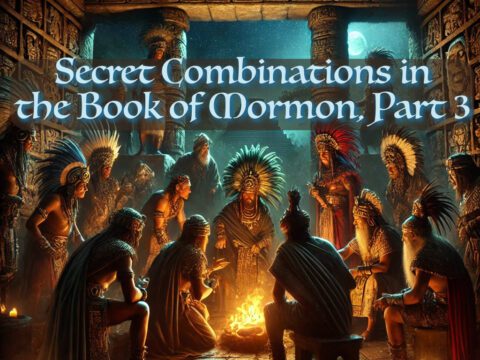One of the most interesting books that I have read recently is Scott B. Noegel’s excellent research work, Janus Parallelism in the Book of Job (Sheffield, UK: Sheffield Academic Press, 2009).
After all the centuries of biblical studies that have been conducted, I am intrigued at how much continues to be found in the pages of the Bible. For example, in the heavily investigated area of poetry and especially parallelisms in the Hebrew Bible, it was only recently that scholars began to uncover evidence of an intriguing form called Janus parallelism. Referring to the two-faced Roman god, Janus, this form of parallelism uses a single word with two meanings has one meaning complete or relate to the immediately preceding text and a second meaning that relates to the following text. It is a clever word play in which one word works in two ways, looking forward and backward.
Cyrus Gordon discovered and named this technique in a 1978 publication,”New Directions,” The Bulletin of the American Society of Papyrologists, vol. 15, no. 1/2 (1978), pp. 59-6. Gordon found a verse in Song of Solomon 2:12: “The blossoms appear in the land || the time of the zâmîr has arrived || and the song of the turtle-dove is heard in our land.” Gordon noted that zâmîr means either the “pruning season” or “music” and can thus relate appropriately to the preceding and following phrases, using both of its meanings. Since then, other scholars have examined possible cases of Janus parallelism, but the most thorough and ground-breaking work appears to be that of Scott Noegel, whose book is based on his Ph.D. dissertation.
If nothing else, Noegel’s work should greatly enhance our appreciation of Job as a literary marvel. The onslaught of cunning puns in that text astounds me, in particular the sophisticated use of Janus parallelism, for which Noegel has uncovered several dozen. The Book of Job is like the transcript of a heated contest of punsters battling for literary mastery, with God being the ultimate victor. Noegel also reveals several other Janus parallelisms in other parts of the Hebrew Bible that have not been previously noted. It is a thorough, intelligent, thought-provoking work and a significant contribution in biblical studies, in my opinion. Kudos to the author for terrific scholarship.
Noegel’s analysis also may give future scholars a handful of tools for further investigating some of the many apparent Hebraic word plays already noted in the Book of Mormon, as well as tools for further tentative analysis of other passages in the Book of Mormon, perhaps especially among those most familiar with the brass plates and Jewish poetical forms (e.g., Nephi, Jacob, and Alma). Of course, the task is terribly obscured by our lack of the ancient text. Looking at a translation complicates the recognition of word plays, and this is particularly the case for Janus parallelism where we need to know what word with two meanings was used, and what words were used before and after if. Translation can obscure not only the original words but the order or adjacent phrases. In spite of the difficulties, and yes, the high risk of false positives via the “Texas Sharpshooter Fallacy,” there may be some plausible Janus parallelisms that can be rooted out by those familiar with ancient Near Eastern languages.
As a first pass, the Janus parallels of Job can be compared to some Book of Mormon candidates to see if there is a chance that Book of Mormon writers may have employed some of the same instances. In a later update, I’ll list some of the findings from Noegel and a very tentative cases in the Book of Mormon where there may be a very tenuous hint of some connection. There may not be anything interesting here, and it may be a tool that wasn’t appreciated or used much or at all by Nephite writers. Or it may have been used with great skills in a few cases that are obscured by the translation. In any case, I’d like to encourage other to consider the possibilities of Janus parallelism in our own Book of Mormon (or maybe even the Book of Moses).
Update: A dozen tentative Book of Mormon examples of proposed Janus parallelism are given in subsequent posts under the title, “Janus Parallelism, Book of Mormon Hints,” Part1, Part 2, Part 3 and Part 4.












Well, this is an uncommonly interesting post, Jeff. It's about what I consider one of the Top 10 World Literary Masterpieces (the other biblical work in this select group is the David story). And it's not simply a re-hashing of long-familiar apologetics but a new lone of attack. Just off the top of my head, here are a few questions/observations concerning your proposed search for Janus parallelisms in the Book of Mormon:
(1) These parallelisms are a feature of ancient Hebrew poetry, right? As far as I can see, most of the Book of Mormon is prose, not poetry, and where we do find poetry, it's generally in passages from the KJV. In a Janus parallelism, the ambiguous term is found in the middle of a poetic unit, but there aren't any poetic units in prose. There might be other kinds of recognizable units in prose, but still. In English prose, one might read something like this:
As the evening mist settled over the city, John walked home through the fog, wondering what he should do about Marsha.
Or this:
The boat pulled slowly out from the harbor. John was finally at sea, and wondered what he should do about Marsha.
These might qualify as "prosaic" Janus parallelisms, centered on the ambiguity of the bolded terms (fog as weather/confusion, at sea as location/confusion).
But what if their structure is a little messier, a little more typically prosaic, as with these? —
As the evening mist settled over the city, and the lights came on one by one along the darkening streets, John walked home through the fog, cursing the damp cold and wondering what he should do about Marsha.
The boat pulled slowly out from the harbor. John looked back toward the city, finally at sea, leaving his troubles behind, as he thought, but still wondering what he should do about Marsha.
Do we still have Janus parallelism? Easier to tell with poetry, since poetry has more clearly demarcated units of structure and meaning.
(2) You're right about the problem posed by the lack of any text in the original language. This is a huge problem, perhaps insurmountable. Relying on a translation is doubly problematic when one doesn't know what kind of translation one has. Because it's impossible to preserve all the features of an original in a translation, translators choose which features to focus on. For example, they can choose to focus on reproducing the overall "feel" of the original, that is, to make the reading experience for the modern reader as much as possible like it was for the ancient reader (a so-called "dynamic equivalence" translation). Or they can choose to focus on preserving as closely as possible the exact wording, sentence structure, etc. of the original ("formal equivalence"). But no single approach can ever faithfully reproduce all the aspects of the original. Something is always sacrificed. Many things, actually. (FWIW, many things are added in a translation as well.) Subtle wordplay is perhaps the hardest of all to reproduce in translation.
I would say that the terms dynamic and formal correspond roughly to the apologist's loose and tight. The point that seems relevant here is that a tight translation would be most likely to preserve the parallelisms you're looking for. If you find something that looks like a Janus parallelism and ask whether it's genuine, the answer will probably depend at least partly on your theory of translation.
(3) The Book of Job has the richest vocabulary of all the biblical books, IIRC. The vocabulary of the Book of Mormon is comparatively limited, which probably reduces the likelihood of finding ambiguous words in Janus parallelisms.
— OK
The vocabulary is more limited, yes, but the text employs some of the same concepts found in Job's Janus parellelisms. To my surprise, the usage of those terms by Nephi and Jacob seem to fit similar Janus parallelisms in Job, while this is usually not the case for later Book of Mormon writers. And it is Nephi and Jacob who do occasionally write poetically, along with Alma. (Have you read anything about the high level of chiasmus in their words? Quite an interesting topic.) Nephi's psalm, for example, has a particularly high concentration of proposed Janus parallelisms.